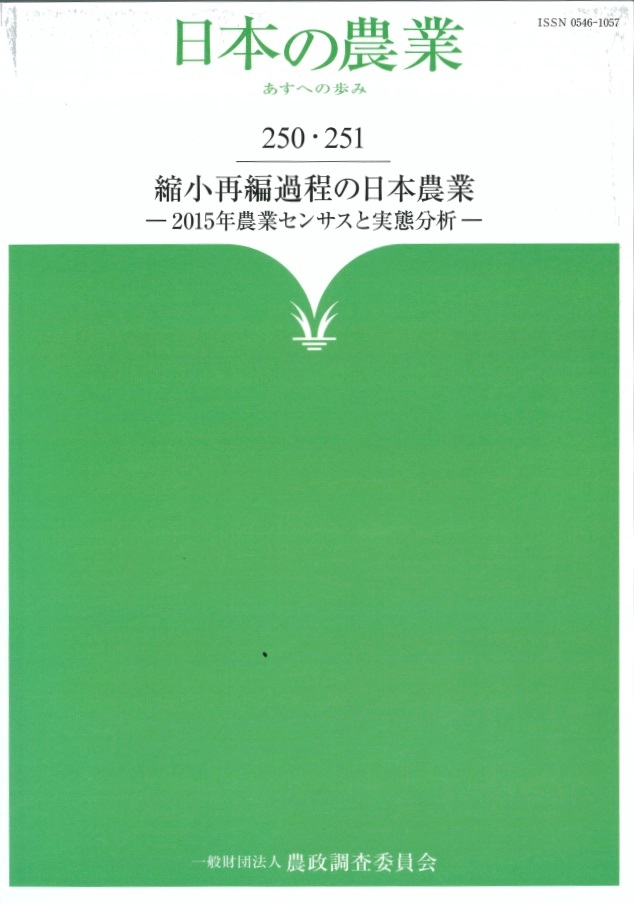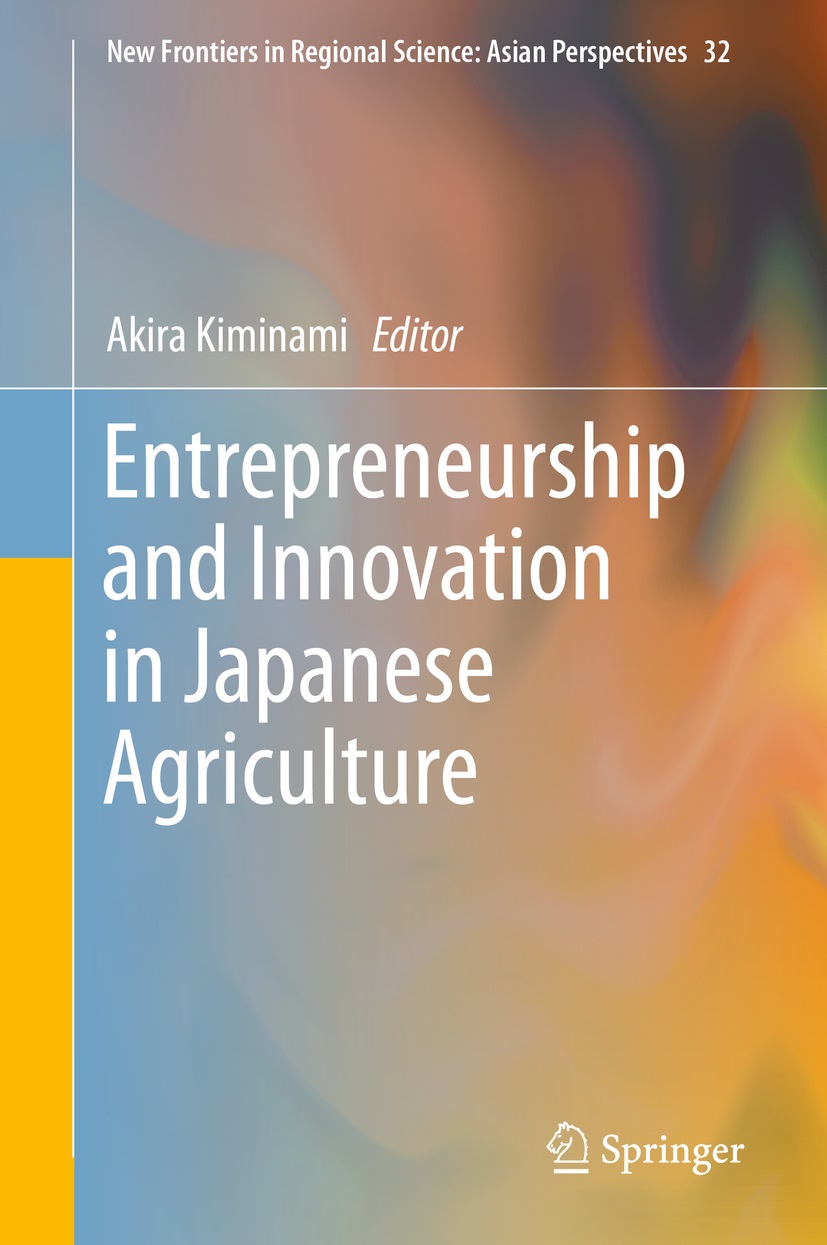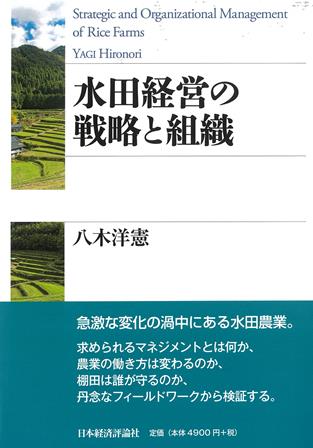
Title
Japanese Agriculture 250 – 251 Shukusho-Saihen-Katei no Nihon-Nogyo (Processes of reduction and reorganization in Japanese agriculture: The 2015 Agricultural Census and Analysis of Actual Conditions)
Size
250 pages
Language
Japanese
Released
March 15, 2018
ISSN
0546-1057
Published by
The Agricultural Policy Research Committee, Inc.
Book Info
See Book Availability at Library
Japanese Page
The purpose of this book is to accurately understand structural changes in Japanese agriculture by combining analysis of the agricultural census and field surveys of rural areas, so as to shed light on its future direction. Held every five years, the agricultural census is a complete survey of agricultural businesses and is the agricultural equivalent of the “national census.” However, in recent years, the efficacy of the analysis process of this census has been challenged by several factors. For example, when all the farmers in a given village participate in establishing a village agricultural business, there statistically remains only one farming enterprise in the village, and it becomes impossible to grasp the structure of the local community. A similar problem arises where the farmland of one village is entirely incorporated into the large-scale farming business of another village. There is scant survey data concerning agricultural enterprises, and it is becoming increasingly difficult to grasp the nature of Japan’s agriculture and rural areas. It is therefore essential to supplement the existing analysis methods using local field surveys in areas where the accumulation of farmland by village agricultural businesses is expanding. This book is a response to these issues in academic research and the result of joint basic research (B) “Comprehensive research into changes in agricultural structure - Bringing together census and field survey analyses (2015 - 2018).”
The 2010 census detected the development of restructuring, in which the gap between statistical figures and the actual situation had increased. Village agricultural businesses had increased rapidly in response to scale requirements under the cross-item management stabilization measures introduced in 2007. As a result, structural changes described via statistics cannot be taken at face value and must be assessed based on actual circumstances through the use of field surveys, particularly in areas where village agricultural businesses are being established at a fast pace. Overall, it was concluded that the establishment of village agricultural businesses in response to government policy directed the evolution of structural reorganization.
A statistical fact captured in the 2015 census—differing from the 2010 census—was that the reduction and reorganization of Japanese agriculture had progressed while retaining regional variations. A startling result was that not only the number of agricultural enterprises and the agricultural labor force, but the area of land under management had also greatly decreased. Of course, the accumulation of farmland under large-scale enterprises had increased in some areas and structural reorganization was progressing; however, looking at Japanese agriculture as a whole, the trend had reversed and begun shrinking. This fact calls for a review of the structural policy that has been promoted thus far.
In addition to this national statistical analysis, this book draws the features of structural change from both statistics and the actual situation in each of the following regions: Miyagi, where structural reorganization is advancing despite the area being struck by the tsunami following the Great East Japan Earthquake; Akita, where the village agricultural businesses that rapidly increased in response to government policy have gradually transformed themselves; Ibaraki, where the leading role of structural change has been shifted from village agricultural business to individual enterprises; Chuetsu in Niigata Prefecture, which had started working on the organization of regional agriculture even before being affected by government policy; Toyama, which is facing problems in areas where farmland has accumulated and in the actual conditions of the leading players; Shiga, in which avoiding the “dilemma of village agriculture businesses” has become a challenge with the advancement of farmland liquidity; and Saga, where the establishment of large-scale village agriculture has progressed with each country elevator and where the gap between statistics and the actual situation is pronounced.
This book is useful for understanding the future of Japanese agricultural structure as well as the trends occurring in rural areas. I would recommend this book to anyone with such interests.
(Written by ANDO Mitsuyoshi, Professor, Graduate School of Agricultural and Life Sciences / 2019)



 Find a book
Find a book




